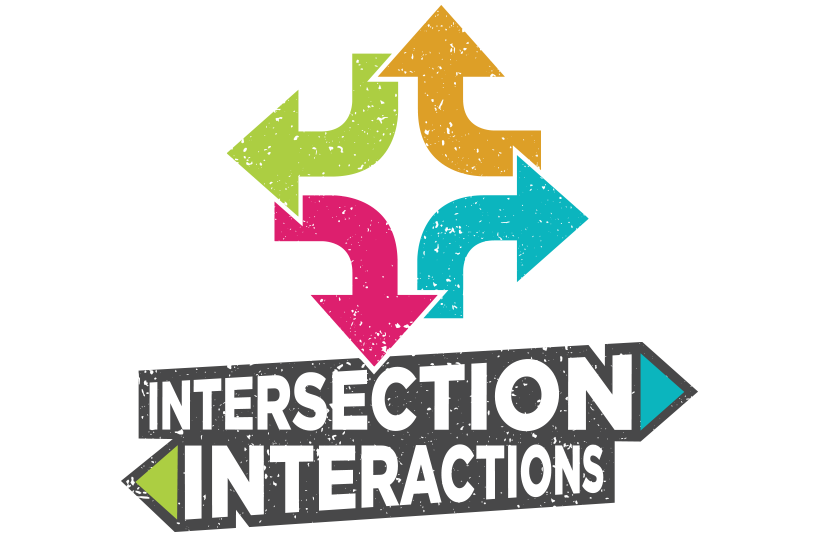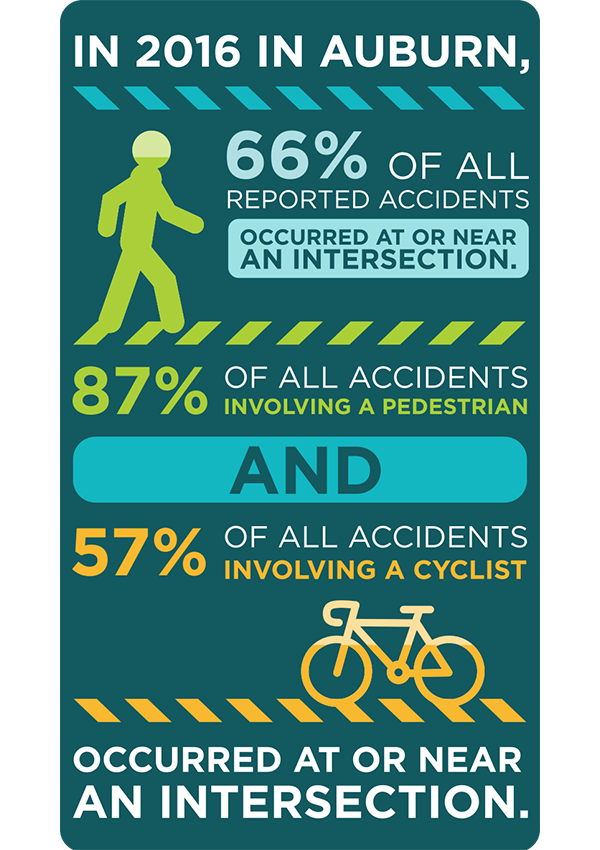Intersection Interactions

Intersections are planned points of conflict where people cross paths as they travel from point A to point B. To reduce potential crashes at these points of conflict, intersections feature enhanced safety elements such as street lighting, increased signage and signals and crosswalk striping. But intersection safety is more than just following traffic signals.
Travelers in all modes of transportation encounter each other at intersections, which is why smart #IntersectionInteractions are fundamental to staying safe on the road. These interactions result from understanding how you’re intended to move through an intersection and making decisions that ensure the safety of all road users – pedestrians, drivers and bicyclists. Any time you approach an intersection, make sure you #KnowWhenToGo.

Information Courtesy Alabama Department of Transportation

Common Intersection Interactions
When a pedestrian signal is present, pedestrians only have the right-of-way at a crosswalk when the pedestrian signal gives you the go-ahead. Be sure to wait for the WALK signal – oncoming traffic may have a green arrow that you are unable to see.
All turning traffic yields to pedestrians unless the traffic signal shows a green turn arrow, in which case you have the right-of-way to make a “protected” left turn.
If you need to make a right turn and a bicyclist is beside or behind you, you must allow the bicyclist to pass through the intersection first before making your turn. Check your blind spot, use your turn signal and avoid making a “right hook,” or cutting off the bicyclist. The right hook is an extremely alarming and hazardous scenario for bicyclists.
If you’re waiting to cross the street at a crosswalk and there is no pedestrian crosswalk signal present, you have the right-of-way ONLY when the street is clear for you to begin crossing without causing a driver or bicyclist to slow down, even on campus.
When making an unprotected left turn without a green arrow, you must yield to all oncoming traffic including pedestrians and right-turning vehicles, unless the right turn lane has a yield sign. A right-turning vehicle with a yield sign must yield to all other traffic at the intersection regardless of where they are coming from.
If you’re a driver or a bicyclist, you must obey all traffic signals and yield the right-of-way to pedestrians who are already within the crosswalk. Also make sure the intersection is clear of all traffic before turning.
Jaywalking is never legal. If you need to cross the street and there is no designated crosswalk present, you must cross the street at an intersection. Speed limits are typically higher mid-block, and it’s more difficult for drivers and bicyclists to anticipate when you’ll cross.
Anytime there is a yield sign present, you must yield right-of-way to all other vehicles (including bicycles) and pedestrians. Always obey traffic signs and signals.
When passing through a traffic circle, always move to the right. Yield to any traffic already within the traffic circle, as they have the right-of-way, and use turn signals to notify other travelers when you are exiting.

